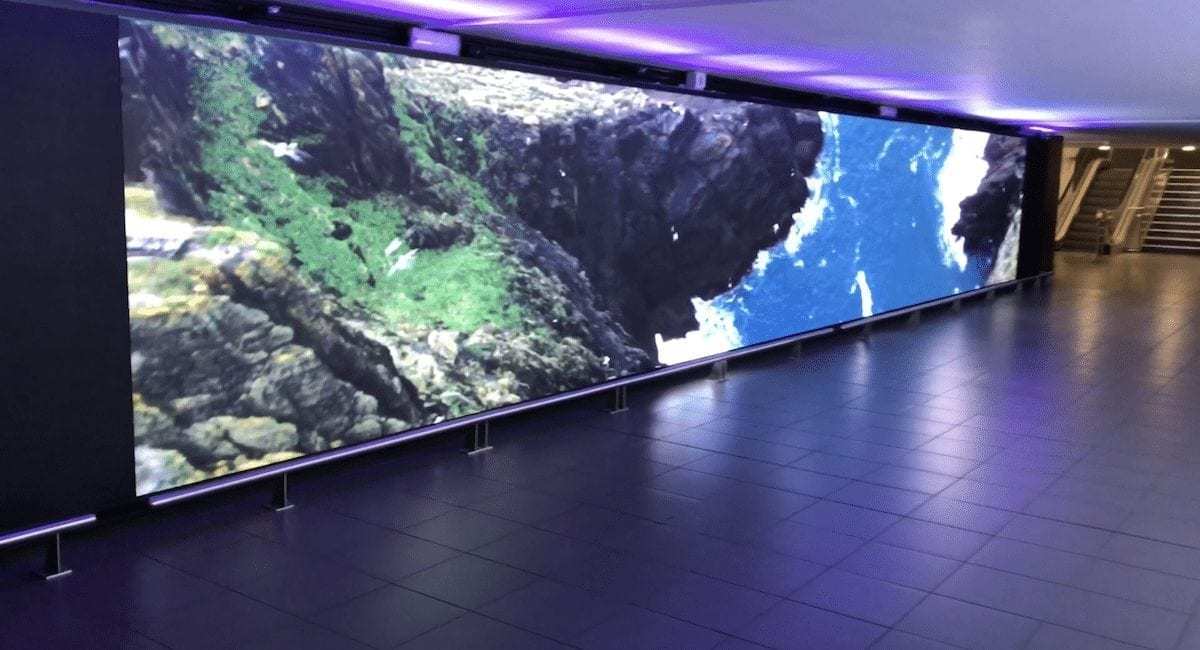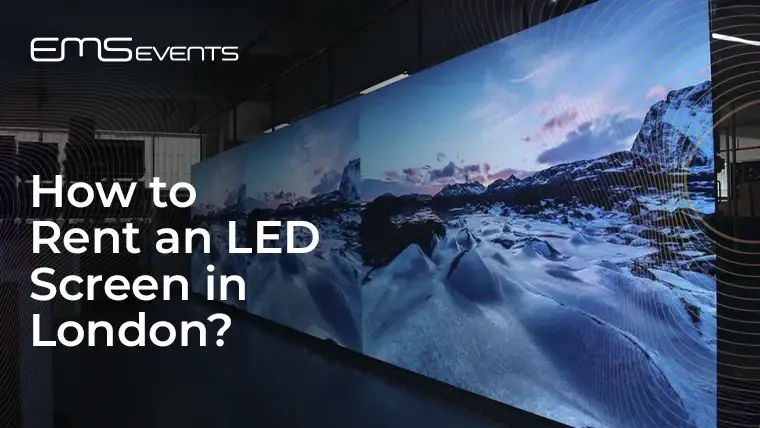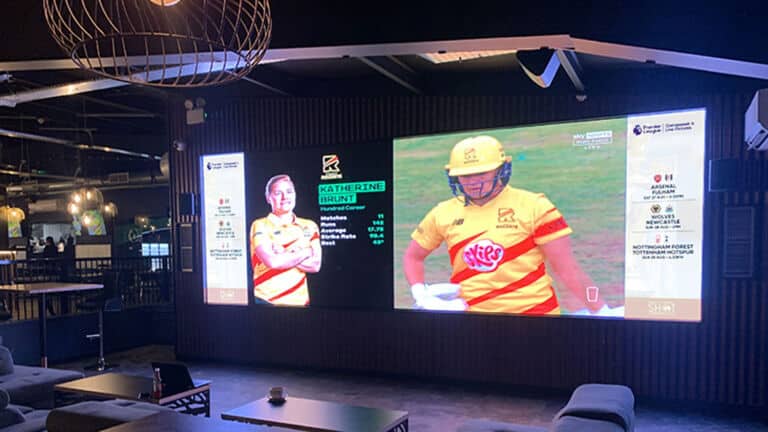When researching LED displays, brightness and contrast ratio are crucial factors to take into consideration because they have a significant effect on the clarity and overall quality of the LED display, especially under different lighting conditions. This is why these aspects are vital:
1. Visibility in Different Lighting Conditions
Brightness: in nits (candelas) per square meters It is a measure of how well the display can be under different lighting conditions. A high brightness is needed for outdoor displays when the light source is strong (like sunlight). This will ensure that the information is easily visible. Indoor displays are generally brighter (around 500 - 1,500 nits) but the brightness can be adjustable.
Applications: A display with a high brightness is required if it will be used outdoors, or in brightly illuminated environments. Insufficient brightness may render the display useless since the display's content could be smudged or rendered invisible when exposed to direct sunlight.
2. Image Quality and Clarity
Contrast Ratio Contrast Ratio: The contrast ratio represents the contrast between the brightest white and the darkest black that a display can produce. A higher contrast increases the depth and vibrancy of colors while also improving the clarity and sharpness of images. This is particularly true for screens that show dynamic video or images with high contrast.
Displays with a high ratio of contrast are better equipped to handle complex content that has varying brightness levels. Examples include movies or advertisements, as well as live broadcasts. Dark areas on a display with low contrast might appear grayish, which decreases the impact of the content.
3. Color Accuracy and Visual Impact
Color accuracy, Brightness - The brightness of a display can impact the accuracy of color. Displays that are adequate in brightness and consistency can accurately reproduce colors and is crucial in advertising, branding and other content.
Contrast and perceived brightness: A high contrast level can boost the brightness that is perceived by displays. Even if the nit rating of two displays are identical, the display that has more contrast will have brighter images.
4. Energy Consumption
Efficiency and brightness: Higher brightness levels usually require more energy. It is therefore essential to balance brightness demands in conjunction with energy efficiency especially when displays are used continuously or are part of large-scale installations. Thanks to advances in the field of LED technology, displays are now able to be more energy efficient and deliver the highest brightness.
5. Content Versatility
Different types of content require different levels of brightness The requirements for brightness vary based on the type of content being text, static images or video. Text-based content, for instance is benefited by high contrast in order to make it more easy for users to read, whereas video-based content might require both brightness and contrast.
Application: Adjustable brightness and contrast settings can be beneficial in environments that change content frequently for example, advertisements screens or event displays. This allows the display to adjust to the changing requirements of the material.
6. User Experience
Brightness Adjustability: Displays that provide either automatic or manual brightness adjustments can provide a more user-friendly experience by adjusting to the changing conditions of light throughout the day. This allows the display to remain visible throughout the day without creating eyestrain or glare.
Contrast and Eye Comfort - A high contrast ratio will reduce eye strain. This allows you to focus on the content for longer periods of time, which is great for displays at events, public spaces or retail environments.
Conclusion:
The brightness and contrast ratio of an LED display are essential for it to function effectively in its intended setting. This ensures that the content is vibrant, clear and simple to read. The performance of the display overall and user experience will be greatly affected by the lighting conditions, whether indoors or outdoors in dim or bright conditions. When selecting the most suitable display, it is important to weigh these elements in tandem with energy efficiency and content specifications. Follow the best creative led displays for blog info including led the wall, wall tv, church video wall, outdoor digital display, led a board, outdoor led display screen, transparent screen monitor, church video wall, advertising tvs, led video wall panels and more.

What Is The Importance Of The Angle Of View When Looking Into Led Displays?
It's important to consider the viewing angle while researching LED displays. Particularly in cases in which it is viewed from a variety of angles and from different locations. Here are a few reasons the viewing angles is so crucial:
1. Uniform Image - Quality
Definition The viewing angle of LED displays is the highest distance at which the display is viewed with acceptable performance in terms of visual quality (typically with regard to brightness and color consistency). Often the viewing angle will be defined both in vertical and horizontal directions.
Important: Wider viewing angles ensure the same image quality regardless of the way a viewer places themselves relative to the their display. This means that colors don't change and brightness doesn't diminish when viewed on the side or above/below.
2. Audience Experience
Effects on large venues Impact on Large Venues: In big venues such as stadiums, concert halls or conference centers, audiences are spread out over a large space. A display with a narrow view angle could result in poor visibility and degraded image quality for viewers with sharp angles to the screen, leading to a poor experience.
Application: For large-scale events or installations in which the audience is placed within a broad arc, a wider view angle is required to ensure that everyone get a clear, vibrant image of the material being shown.
3. In public Spaces
Public Display Applications. In areas such as shopping centers or transportation hubs where people are looking at the display in all directions, the viewing angles is crucial. The display's effectiveness in engaging and attracting people to visit is limited by a narrow viewing angle.
Application If digital signage is employed in public spaces, the wide viewing angle increases the reach of the display. This means that the content is visible from all angles, and is appealing.
4. Content Consistency
Uniformity of Color and Brightness A display that is not viewed from a proper angle may exhibit color shifting or brightness drop-off when viewed from a position that is not in the center. It is especially problematic if the content you're displaying has a connection to a brand, and color accuracy is important.
Application: Wide viewing angles are beneficial in settings where consistency of color and branding are crucial, like retail displays or corporate spaces. They guarantee that the display is just as intended from any angle.
5. Installation Flexibility
The ability to install a display with a large viewing area allows for more flexibility. For instance, it allows more creative placement options such as placing the display on columns or putting it in areas that viewers approach from different directions.
Application Wide viewing angles are ideal for LED displays in artistic or architectural settings, like those found in museums, galleries or immersive experiences. They permit more creative designs without compromising on the user's experience.
6. Renting and staging the performance
Event Setting: When renting or staging displays, which may be set-up in different configurations, the wide-viewing angle will ensure that they perform well regardless of the place where audiences are positioned.
Application for trade shows that draw an audience that moves around or at concerts that have people viewing the screen from different locations A wide-angle view will ensure that everyone is able to see the display clearly.
7. Impact on ROI
Enhancing the visibility of a Display: A display that has a large view area can attract an even larger number of people. This can enhance its impact and improve return-on-investment (ROI). This is especially important when it comes to informational displays or advertising screens, where maximising visibility is crucial to achieve the desired results.
Application: For commercial installations, it is crucial to make sure that the display can be seen from different angles. This can increase the level of engagement for viewers and the efficiency of the information is displayed.
Conclusion:
The viewing position is a significant factor which affects the efficiency and visibility of a LED screen. This is particularly important when you have an extensive audience, displays that may be seen from different angles, or in situations where the consistency of content is essential. Wide viewing angles are essential when you are researching LED displays so that the display meets your requirements and provide an enjoyable viewing experience for all. See the top led rental screen for more tips including transparent display monitor, led screen, transparent led screen, video walls, outdoor led screen, led display screen, wall tv led, led on screen, church led wall, transparent led display screen and more.

What Is The Importance Of Color Accuracy And Calibration When You Are Researching Led Displays?
The accuracy of the color of LED displays is extremely important especially when it comes to applications that focus on the integrity of brands and quality of visuals. This is why:
1. Visual Quality and Realistic Realism
Color Accuracy is the degree to which the LED display accurately reproduces the colours that the designers of the material intended. Color accuracy must be high for videos and images to appear realistic and vibrant. The colors appear exactly as they should, without distortions or unnatural changes.
Important for applications like broadcasting, retail or advertising, as well as professional presentations, accurate reproduction of colors is essential to keep the appeal of visuals and convey the message effectively.
2. Brand Integrity
Consistency: Businesses that rely on certain color schemes as part of their branding must ensure that they are using the correct colors. Brand identity could be damaged if the color scheme is not accurate.
Application: Keeping brand colors accurately in retail displays, corporate settings and advertising is crucial for consistency in brand representation across all platforms and media.
3. Engagement and Impact of Audience
Improved Experience for Viewers: Displays with high-quality color accuracy can provide a more immersive and engaging experience for viewers. Displays that are accurate in color can communicate emotions with greater effectiveness and boost the impact of your display.
Application: In settings like museums, entertainment venues or any other venues that aim to provoke emotions in the viewer, accurate color will ensure that people experience the information in the way it was designed.
4. Content Creator Intent
A precise representation: Artists and designers spend a lot of time developing visuals using specific color palettes. A display with LED technology that can precisely reproduce these colors will ensure that their work is presented as intended.
Application Color accuracy is essential in the field of film, digital photography and art, where color plays an an important role in the story and aesthetic appeal.
5. Calibration of Consistency
Uniformity Across Panels: Calibration ensures that each LED panel in the display have consistent colors and brightness levels, thus preventing gaps or mismatches. This is crucial when large displays are comprised of multiple panels.
Regular Maintenance is necessary to ensure color accuracy. Even the finest displays can deviate over time. To maintain consistency and ensure that they meet the highest standards of quality, regular calibration is required.
Application: Calibration is crucial for outdoor video walls, displays or multi-panel installations. This is important to ensure a uniform and seamless appearance.
6. Impact of Content Types
Different types of content: Different types of content require different levels and accuracy in terms of color. Displays that show medical imaging, for example, require high color accuracy to ensure exact diagnosis. Advertising displays may place greater emphasis on brightness and saturation.
Application: In fields such as high-end design and retail medical imaging, or medical imaging the ability for precisely calibrated color settings is vital to ensure that the display is in line with the specifications of its content.
7. Technology and Specifications
Bit Depth, Gamut and wide color gamut. Displays that have high bit-depth and a wide color gamut (such as DCI P3 and Rec.2020) have greater color accuracy and reproduce a wider range of colors. 2020 ) offer better accuracy in color. They also can reproduce more colors. When choosing a display, it is crucial to be aware of the specifications.
Modern LED displays come with sophisticated calibration tools and software, that permit precise adjustments. They make sure that the display remains correct over time.
Application: For industries where accuracy of color is a must like film production, graphic design, and advertising with high-end quality investing in displays that have higher accuracy in color and calibration capabilities is vital.
Conclusion:
It is essential to ensure that LED displays are calibrated and have precise color reproduction to create high-quality images that accurately reflect the intention of the designer and meet brand standards. A precise color reproduction is essential for any display, whether employed for entertainment, advertising or presentations for professionals or for specialization in areas such as medical imaging. If your needs require precise reproducing colors and consistent performance, then accuracy of color and calibration is a must when you're looking into LED displays. See the recommended lightweight led screen for website info including led in the wall, led screen rental, tv the wall, led board, outdoor display led, led display screen rental, led panels, advertising displays, led video wall panels, led display and more.
